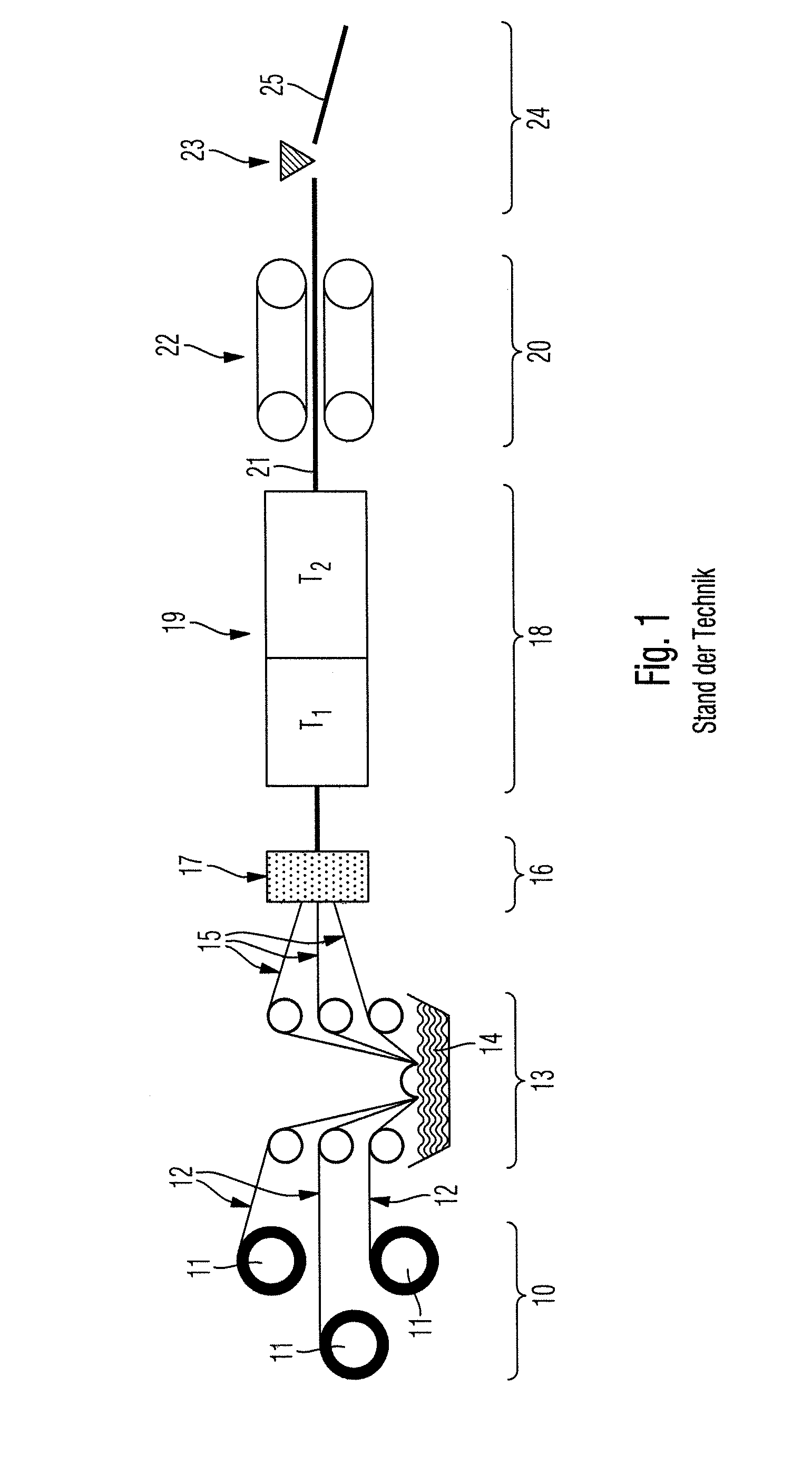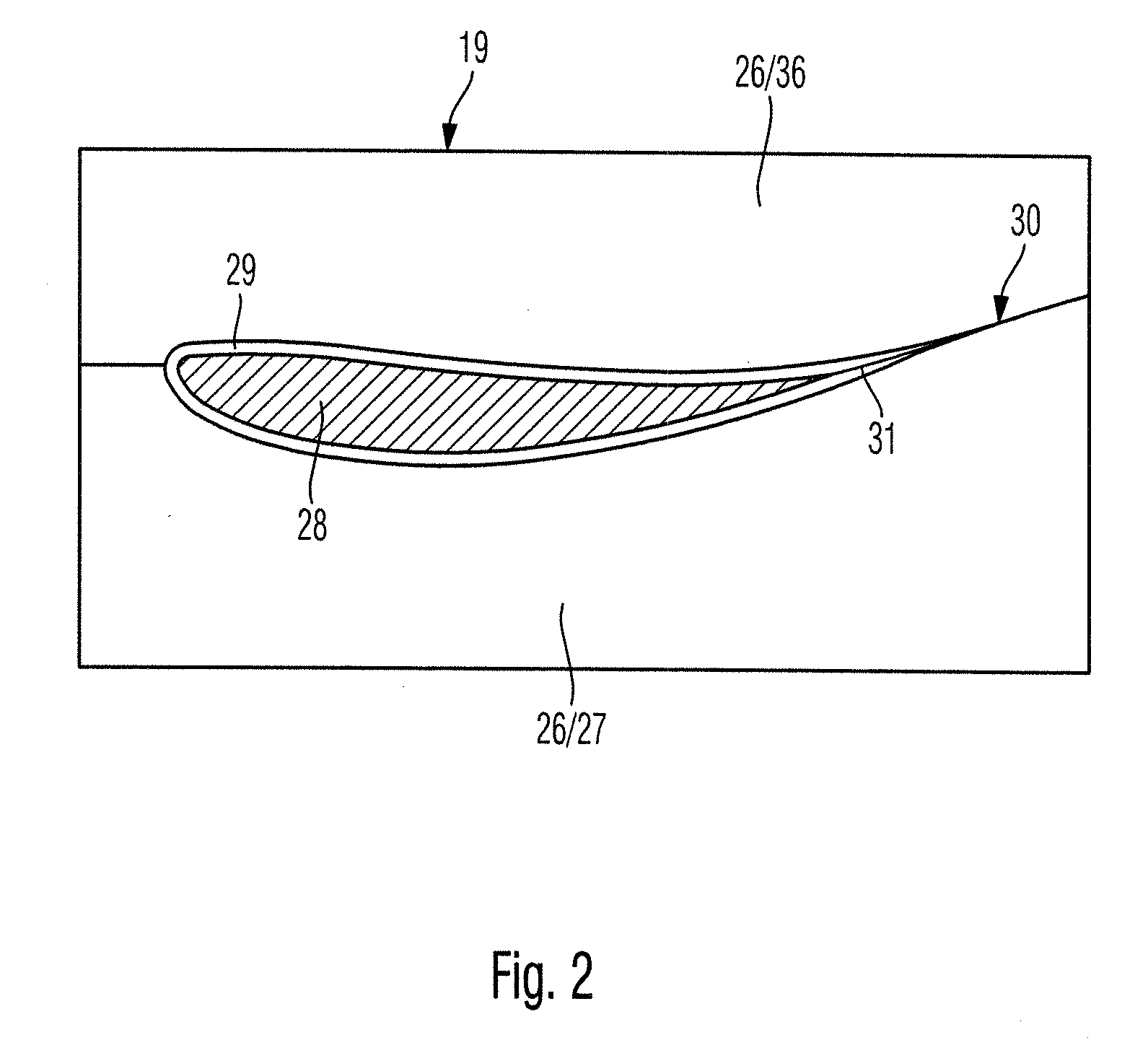Process for producing components
a technology for producing components and components, applied in the field of process for producing components, can solve the problems of difficult hollow space and effort to use extrusion to produce hollow components
- Summary
- Abstract
- Description
- Claims
- Application Information
AI Technical Summary
Benefits of technology
Problems solved by technology
Method used
Image
Examples
Embodiment Construction
[0018]The invention relates to a process for producing fiber-reinforced hollow components by an extrusion process. The extrusion processes of the invention also are referred to as pultrusion processes. Parts of the inventive extrusion conform to the prior art extrusion process illustrated in FIG. 1 and described above. However, the invention provides a further development of the known extrusion process and allows extrusion to be used for producing hollow components in which at least one further subassembly is positioned in the hollow space after the extrusion.
[0019]The process of the invention differs from the prior art process of FIG. 1 at least during step 18 of FIG. 1, which relates to the final forming of the hollow profile that is to be extruded. More particularly, the process of the invention includes at least an additional step of placing or drawing a separating film between the impregnated fibers of the hollow profile. The separating film extends in the direction of extrusio...
PUM
| Property | Measurement | Unit |
|---|---|---|
| adhesion | aaaaa | aaaaa |
| thermoplastic | aaaaa | aaaaa |
| outer shape | aaaaa | aaaaa |
Abstract
Description
Claims
Application Information
 Login to View More
Login to View More - R&D
- Intellectual Property
- Life Sciences
- Materials
- Tech Scout
- Unparalleled Data Quality
- Higher Quality Content
- 60% Fewer Hallucinations
Browse by: Latest US Patents, China's latest patents, Technical Efficacy Thesaurus, Application Domain, Technology Topic, Popular Technical Reports.
© 2025 PatSnap. All rights reserved.Legal|Privacy policy|Modern Slavery Act Transparency Statement|Sitemap|About US| Contact US: help@patsnap.com



